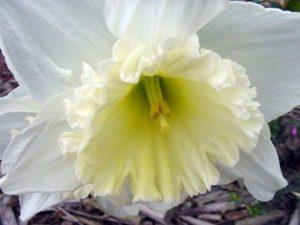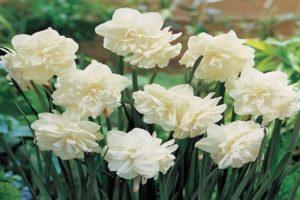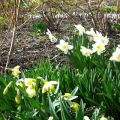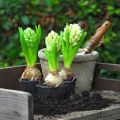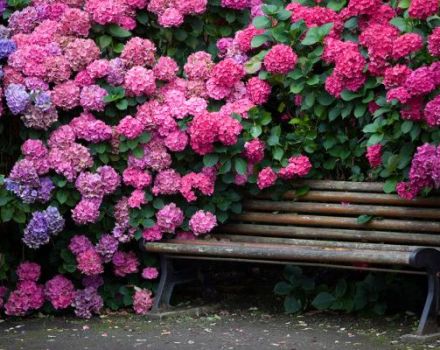Description of the daffodil variety Bridal Crown, planting and care scheme
Each nation has its own legend about the origin of daffodils. But the most famous of them belongs to the myths of Ancient Greece. A handsome young man accidentally saw his reflection in a crystal clear stream. And he liked it so much that the young man could not move away from the reservoir. So he stood, bowing his head over the stream all his life, and after that, on this place a flower grew, which was named after the young man. Narcissus variety Bridal Crown is a bright representative of horticultural culture with high decorative properties and a long flowering period.
In the modern world, several tens of thousands of hybrid varieties of this beautiful and fragrant flower have been bred. But the main decoration of the spring garden is multi-layered or terry daffodils of various shades.
Description and features of the variety
The flowering season of the Bridal Crown narcissus depends on the climatic characteristics of the region. In the southern regions, the primrose blooms in March, and in the northern latitudes, flowering is postponed until the end of spring.
This is a frost-resistant representative of garden flowers that can withstand frosts down to -35 degrees.
By the time of flowering, the daffodil grows to 35-55 cm. The main stem is thin, dense. Leaf blades of a linear shape, pointed at the ends, bright green shades. On the stem, from 3 to 5 buds are formed, which bloom in multi-layered, double flowers. The heart of the flower is wavy, in the initial phase of flowering bright orange shades. Gradually, the crown changes its color to pink. The side petals remain pure white throughout the flowering period.
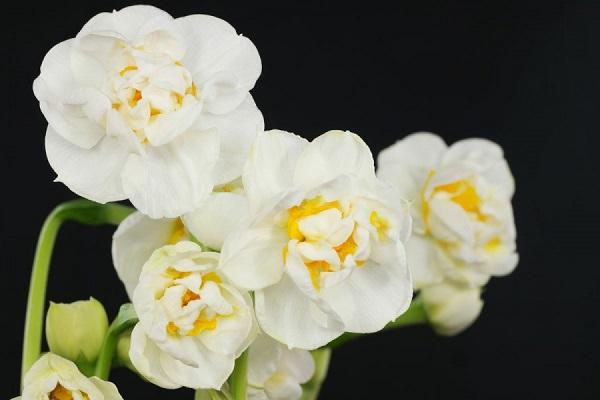
Breeding history
Terry daffodils of the Bridal Crown variety have appeared thanks to the work of American breeders. A new variety was developed in the 60s of the last century. More than 50 years have passed since then, and a beautiful flower still takes pride of place in the homesteads of gardeners and florists around the world.
Growing
Daffodils are perennial horticultural crops, therefore soil preparation and the choice of a place for planting flowers are basic requirements for the growth and proper development of plants.
Terry representatives of the variety are planted in shaded flower beds, protected from strong winds and drafts.

Important! Wetlands with close groundwater are not suitable for planting daffodils.
Bulbous plants grown in high humidity conditions are often subject to fungal and viral infections.
Landing dates
Planting varietal bulbs in open ground depends on the weather conditions of the area where the flowers are to be grown.In temperate climates and northern regions, daffodil planting work begins in mid-August. In latitudes with a mild and warm climate, you can plant bulbs in early November. In order for the bulbs to gain a foothold in the ground and collect useful substances for wintering, planting work is carried out 1.5-2 months before the onset of the first frost.
Planting flowers in spring is recommended only in southern latitudes. Work is carried out in early spring, before the onset of the growing season.
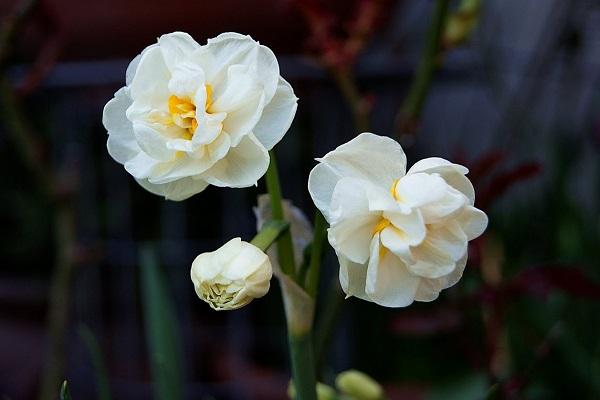
Soil preparation
The preparation of the soil for planting flowers is carried out in advance. For autumn planting, the soil is prepared in spring and summer.
- The land plot is carefully dug to a depth of at least 30-35 cm.
- Weeds, roots and other debris are removed from the flower bed.
- The soil is mixed with humus and peat. Sand is added to clayey, heavy soil.
- Soil with a high acid content is mixed with lime or wood ash.
- 2-3 weeks before planting the bulbs, the soil is re-dug up and mixed with mineral fertilizers.
Important! Do not plant daffodils in flower beds where any bulbous plants previously grew.

Landing scheme
Before planting in open ground, daffodil bulbs are carefully inspected for damage, diseases and pests. Further, the planting material is treated with professional disinfectants or a weak solution of manganese.
- In the prepared flower bed, holes are dug with a depth of 30 to 40 cm.
- The distance between the holes is 10-15 cm, between the rows is 20-30 cm.
- Small stone or rubble is laid out at the bottom of the holes.
- Next, fertile soil is poured into which the bulbs are laid out.
- Large planting material is buried 12-15 cm from the soil level. Small bulbs by 10-12 cm.If further reproduction of flowers is planned with the help of children, the deepening is reduced to 8-10 cm.
- The bulbs are covered with soil and watered.
- After the end of planting activities, the soil in the flowerbed is mulched with sawdust or dry grass.
To get beautiful and healthy primroses, be sure to follow the rules for choosing planting material and planting in open ground.

Care rules
Daffodils of the Bridal Crown variety are not demanding for care. Timely watering and feeding will help to grow beautiful fragrant garden flowers that will delight you with their flowering for a long time.
Loosening and weeding
Most weeds interfere with the proper growth and development of daffodils. I weed the flower bed carefully, because the plant bulbs are close to the soil surface. The same precautions are taken when loosening the soil. Loosening work is carried out as needed. The first sign that a sufficient amount of oxygen and moisture does not come to the bulbs is the formation of a dense earth crust on the surface of the flower bed.
Watering
Daffodils, although they do not like highly moistened soil, are demanding for watering. Watering is especially important during the period of bud formation and flowering.
After the plant fades, the time comes for the bulbs to ripen, which also need moisture.
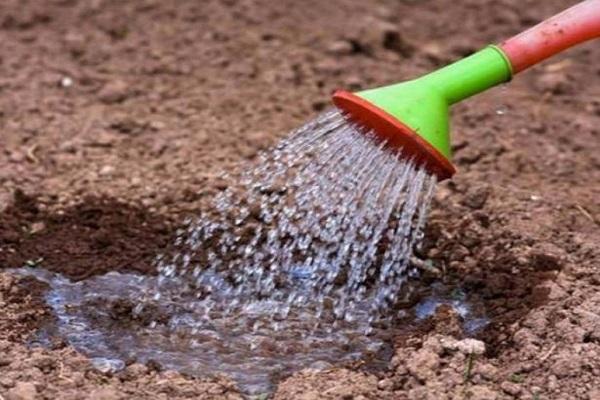
Protection from pests and diseases
Proper care of garden flowers increases resistance to diseases and pests. But, every year, they carry out preventive work to protect the garden culture.
Sclerocial rot
A lesion manifests itself during the growing season. On the bulbs and soil, a plaque forms in the form of a dense web. The plant turns yellow and the bulbs rot. The main preventive measures are the correct storage and planting of planting material.
Fusarium
Fungal damage to the plant bulb. Especially common in southern regions with hot climates. Before planting in open ground, daffodil bulbs are treated with special preparations.
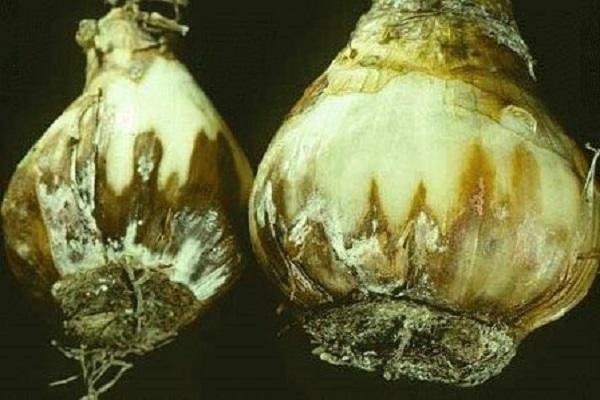
Thrips
Thrips not only infect plants, but are also capable of carrying various fungi and viruses. Therefore, it is necessary to fight the pest at the earliest stage of plant infection. There are specialty preparations that can be purchased at garden centers and flower shops.
Nematodes
Flowers often infect stem or leaf nematodes. It is very difficult to deal with pests, as they are not susceptible to any drugs. Damaged plants are removed from the soil and destroyed. Also, at an early stage of infection, fungicide-based preparations are used.
Bulbous and Narcissus Flies
For the prevention of bulbous and narcissus flies, the planting material is treated with hot water before planting in the soil. And during the period of bud formation, the bushes are sprayed with fungicide-based agents.
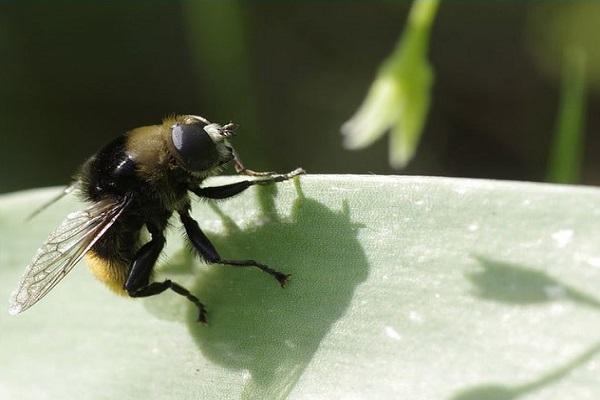
Preparing for winter
Garden daffodils are winter crops, but in the northern regions, flowers are additionally insulated.
At the end of autumn, the soil in the flowerbed is mulched with peat and sawdust. The next layer is laid out with dry foliage or spruce branches.
They remove the shelter after the first spring thaw.
Top dressing
In the active phase of the growing season, varietal daffodils need additional feeding and fertilization.
They feed the garden culture several times throughout the season, alternating organic and mineral fertilizers. Work is carried out to fertilize the plants once every 2-3 weeks.
Important! Daffodils Bridal Crown poorly tolerate fertilization with cow or chicken manure.
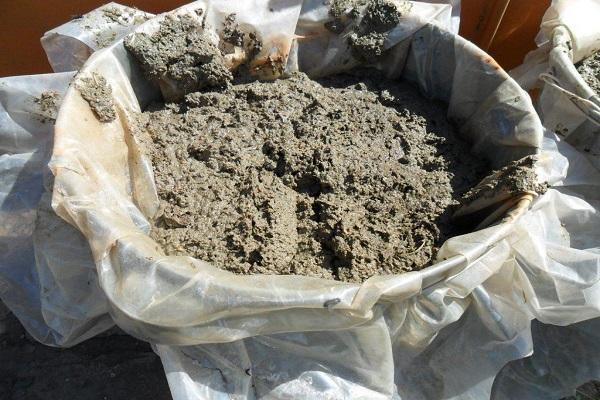
Reproduction
Varietal flowers are propagated by vegetative methods.
- Reproduction by children. After the flowering season, the adult bulbs develop an increase in children, which are separated from the mother flower and planted as an independent plant.
- Separation of bulbs. Large bulbs are divided into 4-6 equal parts. After separation, the planting material is treated with special growth stimulants and planted in fertile soil.
After flowering, in place of the inflorescences, fruits are formed, in which the seeds of daffodils are located. With the seed method of propagation of hybrid crops, the varietal characteristics of the mother plant do not appear. But for the reproduction of ordinary daffodils, this method is quite suitable.
Application in landscape design
Large, double flowers of the Bridal Crown daffodils will become the center of any spring flower bed. Florists and landscape designers often use spring primroses to create alpine landscapes, vibrant flower beds and flower borders.
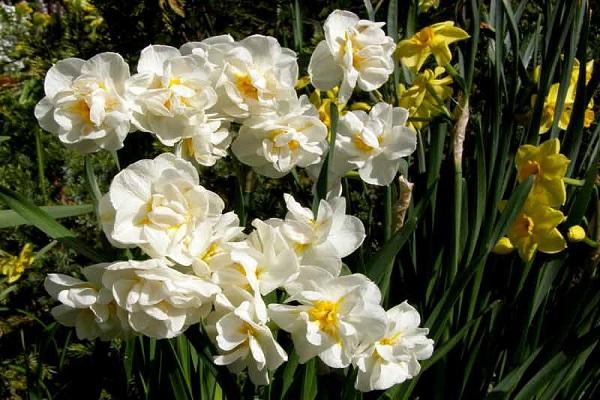
Reviews
Victoria Nikolaevna, Perm
I never thought that daffodils could be so luxurious until I came across Bridal Crown. The bulbs were sent to me by a friend from Crimea. In the very first year of planting, interesting daffodils bloomed on the flowerbed. On one stalk 4-5 large, double flowers have opened. I didn't even know that daffodils are like that.
Elena Ivanovna, Pyatigorsk
I have been growing daffodils for a very long time, and mainly for business. A few years ago I came across the Bridal Crown variety. According to the description, this daffodil is not suitable for cutting and making bouquets, as it quickly fades. Do not believe it, it is very fit. It stands well in decorative bouquets for 7-10 days.
